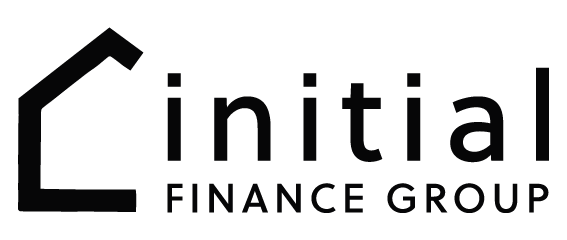The finance industry has a bunch of acronyms and abbreviations that can make the home buying process a little confusing. But they’re not as difficult to understand as you might think. Take our short quiz to see how many you can answer!
Below we’ve listed eight commonly used acronyms and abbreviations in the mortgage and finance industry.
So grab a pen and some paper and test out that noggin of yours!
Quiz time
We’ll give you one point for each acronym you can identify, and an extra point if you know what it means.
1. LVR
2. LMI
3. FHB
4. FHLDS
5. Low Doc
6. DTI
7. ADI
8. FHOG
Once you’ve written down your responses, scroll down for the answers below.
…
…
…
…
Keep scrolling…
…
…
…
…
1. LVR: Loan to Value Ratio
LVR is the percentage of the property’s value, as assessed by the lender, that your loan equates to.
For example, if the property you want to purchase is valued at $500,000, and you need to borrow $400,000 to pay for it, the loan is worth 80% of the property value, making your LVR 80%.
2. LMI: Lenders Mortgage Insurance
LMI is insurance that protects the bank or lender in case you can’t pay your residential mortgage.
It’s usually paid by borrowers with an LVR higher than 80% – that is, borrowers with a deposit of less than 20%.
3. FHB: First Home Buyer
This one is pretty self-explanatory. Basically, a FHB is someone who has never purchased property before but is in the process of doing so.
Being a FHB allows you to take advantage of a number of federal and state government schemes and incentives, which we’ll cover below.
4. FHLDS: First Home Loan Deposit Scheme
The FHLDS is a federal government scheme that allows eligible FHBs with a 5% deposit (aka 95% LVR) to purchase a property without paying for LMI.
This can save FHBs thousands of dollars (sometimes even tens of thousands!) and help them enter the property market sooner.
5. Low Doc: Low Documentation home loan
Low doc home loans are often used by self-employed borrowers who find it difficult to provide conventional proof of income. That’s because many self-employed people try to minimise their taxable income to pay less tax, but this creates problems when they try to borrow.
Fortunately, low doc loans don’t require the same level of “documentation” as normal loans and are specifically designed for self-employed people who are capable of servicing a loan.
6. DTI: Debt-to-Income ratio
Your DTI is used by lenders to determine if you can afford to take on any more debt. Basically, it compares your total debt to your gross income.
The formula is: Total Debt / Gross Income = Debt to Income ratio
So if you have a $500,000 home loan (and no other debt), and $160,000 in gross household income, your DTI is 3.125.
7. ADI: Authorised Deposit-taking Institution
ADIs are financial institutions that are licensed by the Australian Prudential Regulatory Authority (APRA) to carry on banking business, including accepting deposits from the public.
They are generally banks, building societies and credit unions.
8. FHOG: First Home Owners Grant
FHOG are generally state government-run grants available to eligible first home buyers to help them get a leg up into the property market.
Typically, they’re in the vicinity of $10,000 to $20,000, and in many states they’re available alongside stamp duty exemptions and federal government initiatives, such as the $25,000 Homebuilder Grant.
How’d you score?
If you scored 1-4: Hey, no worries! We all started out with this score. And to be honest, we enjoy nothing more than helping people embark on their property buying journey.
If you scored 5-8: Have we met before? I’m sure we have. You seem pretty well-versed in the world of property and finance. We should have a chat again soon to discuss your next steps on the property ladder.
If you scored 9-12: You likely either work in the finance industry, are a savvy property investor, or we’ve taught you well! Long story short: you know your stuff!
If you scored 13-16: Ok, so you either work for us, are married to one of us, or you’re one of our competitors sussing us out! If you scored in this range, take a bow!
Last but not least!
If you ever want to clarify anything with us – whether that be acronyms, abbreviations or any other finance topic – then please don’t hesitate to ‘DM’ us (see, we’re down with all kinds of lingo around here!).
Disclaimer: The content of this article is general in nature and is presented for informative purposes. It is not intended to constitute tax or financial advice, whether general or personal nor is it intended to imply any recommendation or opinion about a financial product. It does not take into consideration your personal situation and may not be relevant to circumstances. Before taking any action, consider your own particular circumstances and seek professional advice. This content is protected by copyright laws and various other intellectual property laws. It is not to be modified, reproduced or republished without prior written consent.
Pictures of varying shapes located here
Social media teaser. So you think you’re a trivia buff, huh? Let’s see how you go with our finance jargon quiz.
Subheader. So you think you’re a trivia buff, huh?
E-newsletter recommendations.
Suggested MailChimp subject line: How well do you know your finance jargon? Take our quiz!
Suggested MailChimp preview text: So you think you’re a trivia buff, huh? Let’s see how you go with our finance jargon quiz.

